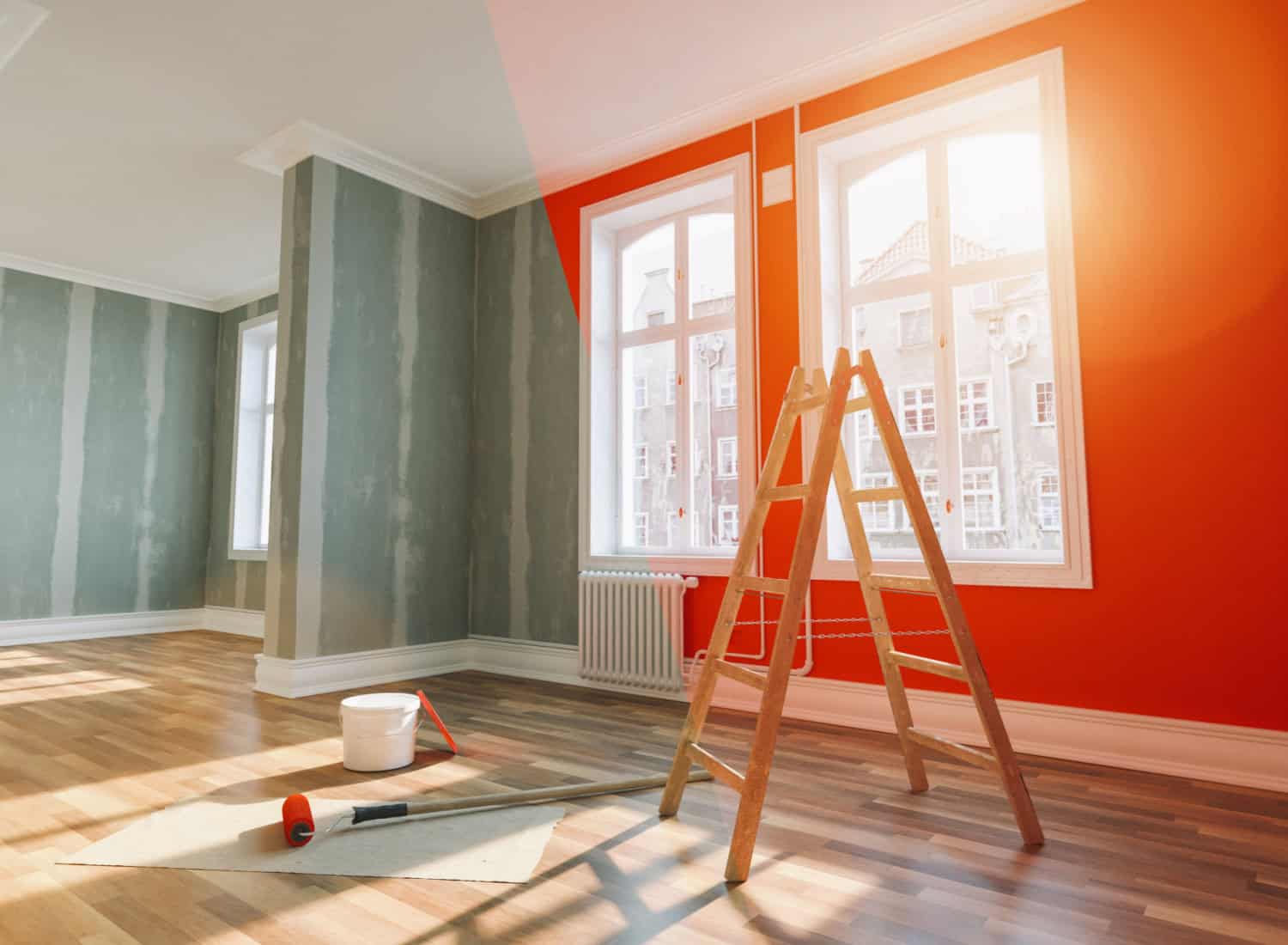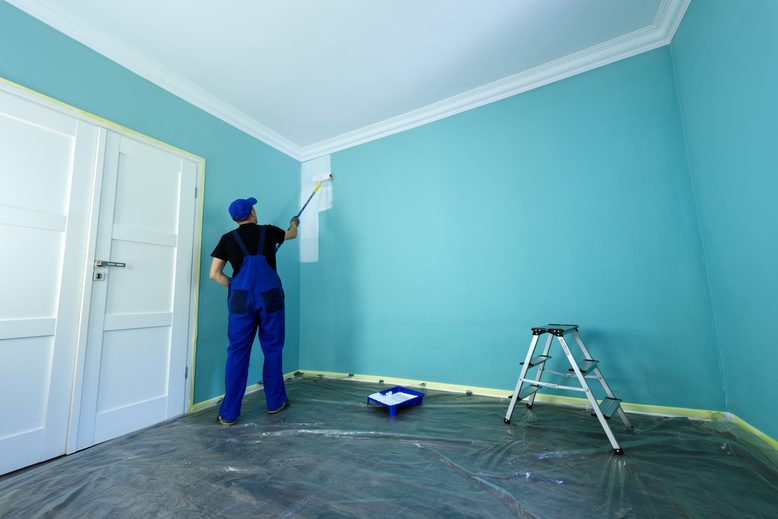Affordable Color Consultation in Lakewood to Transform Your Space with Perfect Hues
Affordable Color Consultation in Lakewood to Transform Your Space with Perfect Hues
Blog Article
Enhance Your Interior Design With Comprehensive Shade Assessment
The combination of color appointment right into indoor style presents an unique possibility to fine-tune and raise the aesthetic and psychological vibration of a space. By engaging with a skilled color specialist, you can browse the intricacies of color choice, guaranteeing that your choices not just complement building functions but also resonate with individual style and emotional effect.
Advantages of Color Appointment

In addition, color assessment aids in maximizing natural light and enhancing spatial understanding. Lighter hues can make a room appear more extensive, while darker shades develop an intimate setup. Cleveland Metro Painting Specialists. This tactical application of shade can dramatically affect the general setting of any kind of indoor space
Furthermore, expert specialists possess a detailed understanding of present patterns and ageless classics, guaranteeing that the chosen shades will stay attractive in time. This foresight can save customers from pricey redesigns in the future. Finally, color consultation empowers customers by giving them with a clear vision and instructions, promoting self-confidence in their style options and eventually resulting in a more satisfying and effective interior design result.
Recognizing Shade Psychology
The importance of shade psychology in interior decoration can not be overstated, as it explores the emotional and psychological impacts that various colors can evoke in individuals. Colors can affect mood, habits, and also efficiency, making them a critical factor to consider in any type of design job.
For instance, warm shades such as red, orange, and yellow are typically connected with energy and warmth. They can promote sensations of excitement and convenience, making them ideal for social areas like living cooking areas or spaces. On the other hand, amazing colors like blue, environment-friendly, and purple tend to evoke peace and serenity, making them suitable for rooms or reflection areas.
Furthermore, using neutral tones can develop a well balanced atmosphere by enabling the bolder shades to stand out without overwhelming the detects. Recognizing these mental influences enables designers to produce areas that not just look cosmetically pleasing but also promote psychological health.
Including shade psychology right into interior style includes a thoughtful option of tones customized to the desired function of each space, ultimately boosting the overall experience for its residents. This understanding is vital for attaining a functional and unified interior environment.
The Shade Wheel Explained
Understanding the relationships between shades is necessary for efficient indoor style, and the color wheel acts as a valuable tool in this process. The color wheel, developed by Isaac Newton in the 17th century, illustrates the range of shades set up in a circular style. It makes up primaries-- red, blue, and yellow-- that can not be developed by blending other colors. Additional colors, created by incorporating primaries, consist of environment-friendly, orange, and purple. Tertiary shades result from blending a main and an additional go to this web-site color, bring about tones such as red-orange and green.
The color wheel assists developers understand the partnerships between shades, consisting of corresponding, analogous, and triadic plans. Corresponding colors, positioned contrary each other on the wheel, produce vibrant contrasts that can stimulate a room.
Utilizing the color wheel in interior decoration not only improves aesthetic charm however additionally evokes certain feelings and atmospheres, making it an essential reference for shade consultation. Comprehending these partnerships inevitably empowers designers to develop areas that are both useful and aesthetically captivating.
Selecting the Right Combination
A well-chosen color system can unify a space, improve its functions, and evoke preferred emotions. Different spaces offer diverse features and need combinations that show their intended usage; for circumstances, relaxing shades such as soft blues or eco-friendlies work well in bedrooms, advertising leisure.
Next, consider the all-natural light readily available. Light can significantly alter just how colors appear, so it is necessary to analyze the space at various times of the day. In addition, think about existing architectural components and home furnishings. A harmonious scheme must match these features, developing a cohesive appearance throughout the area.
When picking colors, use the 60-30-10 policy, which suggests that 60% of the space must be a dominant shade, 30% a secondary color, and 10% an accent shade. This ratio makes sure balance and visual passion (Cleveland Metro Painting Specialists). Example shades on the walls prior to committing, as this enables you to see just how the hues communicate with one an additional and the total ambiance they develop in your indoor design job.
Dealing With a Shade Consultant

When dealing with a shade consultant, the procedure typically begins with an initial consultation. During this meeting, you'll review your vision, choices, and the existing aspects in your area. The specialist will certainly analyze your demands and might suggest particular color schemes that line up with your goals.
After establishing a direction, the consultant next page will certainly give examples and visual help to aid you imagine the proposed color design. This action is important, as colors can show up in a different way under varying lighting conditions.
Additionally, a color professional can assist you in selecting corresponding furnishings, art work, and devices to harmonize with your picked scheme. By working together closely, you can attain a refined visual that raises your interiors and creates a welcoming environment. Ultimately, the expertise of a shade consultant can dramatically improve the total effect of your design task.
Conclusion
In recap, extensive shade assessment offers as a vital device for enhancing indoor design. By leveraging professional expertise of color psychology and spatial characteristics, a tailored color scheme can be developed to stimulate specific emotions and develop a harmonious atmosphere. This critical approach not only promotes a cohesive style story however also mitigates the threat of expensive redesigns. Ultimately, engaging with a shade specialist ensures a notified and visually pleasing end result, elevating the general experience of the area.
By involving with a seasoned color specialist, you can navigate the complexities of color selection, guaranteeing that your choices not only complement architectural features but also resonate with personal design and psychological effect. It makes up main colors-- red, blue, and yellow-- that content can not be created by mixing various other shades.The shade wheel helps designers understand the relationships between shades, consisting of corresponding, comparable, and triadic plans.When selecting shades, use the 60-30-10 policy, which suggests that 60% of the space should be a leading shade, 30% an additional color, and 10% an accent color. By leveraging professional knowledge of shade psychology and spatial characteristics, a tailored color scheme can be created to evoke particular emotions and create a harmonious setting.
Report this page